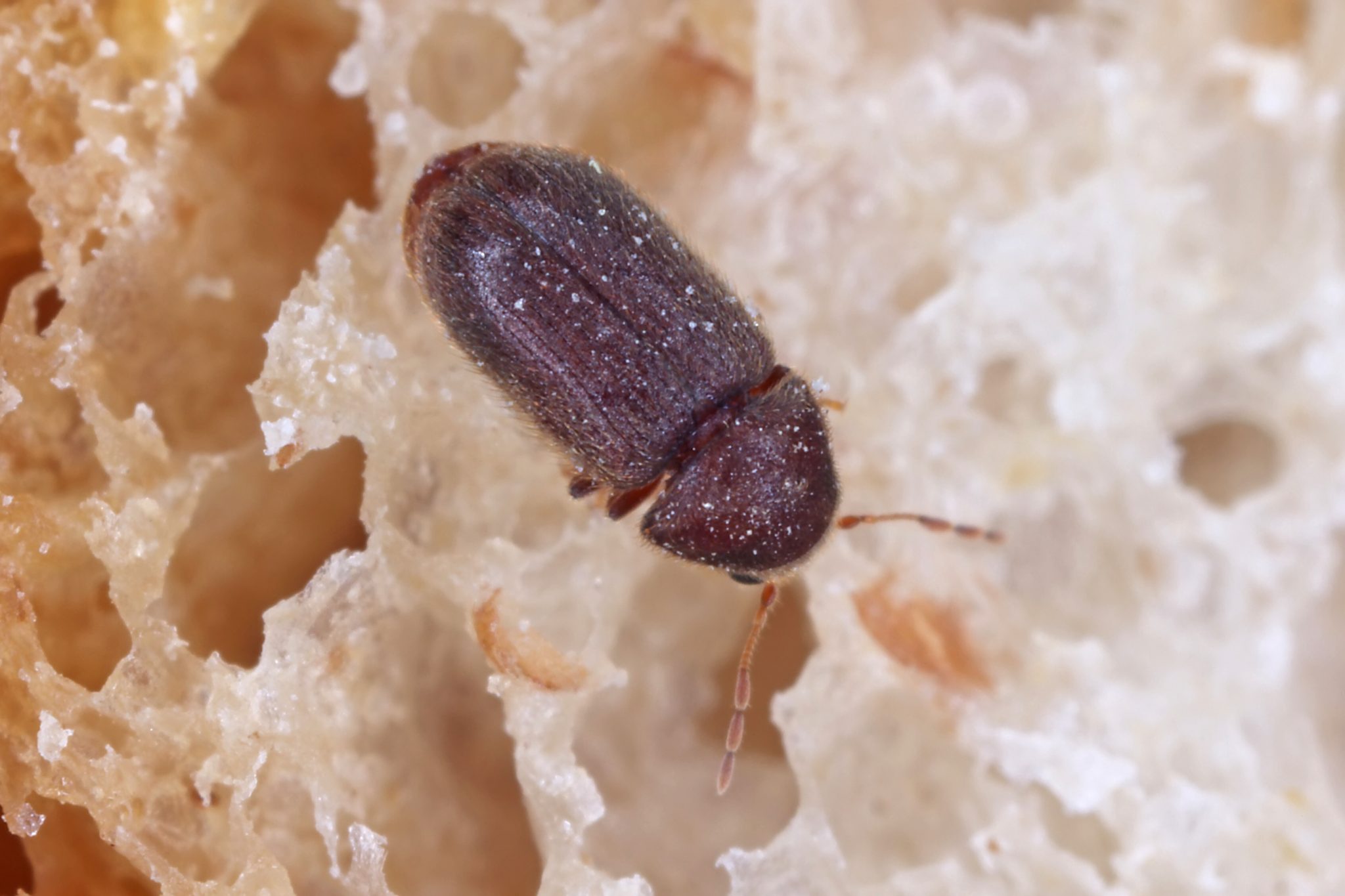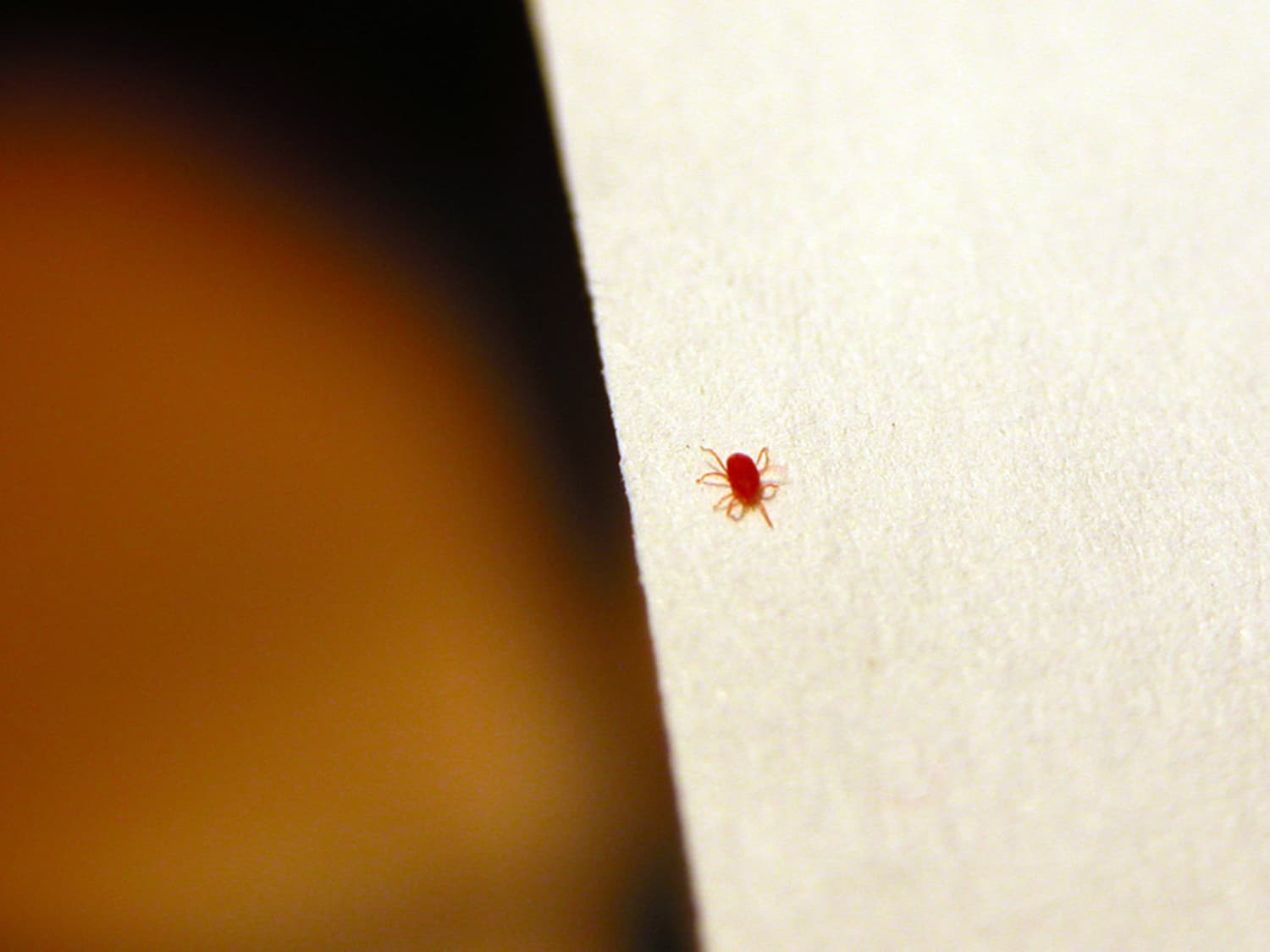Identifying the Culprit

Those tiny, brown creatures crawling around your bathroom might seem like a nuisance, but they can also be a sign of a bigger problem. Identifying the specific type of bug you’re dealing with is the first step towards finding a solution. Here’s a closer look at some common little brown bugs found in bathrooms, along with their distinguishing features and potential harm to humans.
Common Bathroom Bugs, Little brown bugs in bathroom
- Carpet Beetles: These tiny, oval-shaped bugs are about 1/16 to 1/8 inch long. They have a distinctive pattern of brown and white scales on their bodies. Carpet beetles are attracted to organic matter, including hair, skin flakes, and even dust. While they don’t bite humans, they can cause damage to carpets, clothing, and other fabrics.
- Booklice: These tiny, wingless insects are about 1/16 inch long and have a pale brown, almost translucent body. They are often found in damp, humid environments, like bathrooms. Booklice feed on mold, mildew, and other organic matter. They are not known to bite humans, but they can cause damage to books, paper, and other materials.
- Silverfish: These elongated, silver-colored insects are about 1/2 to 3/4 inch long. They have three long, bristle-like appendages at the end of their abdomen. Silverfish are nocturnal and prefer dark, humid environments. They feed on starchy materials, including paper, glue, and fabrics. While they are not known to bite humans, they can cause damage to books, clothing, and other materials.
- Centipedes: These elongated, segmented creatures can range in size from a few millimeters to several inches long. They have numerous legs, typically 15 pairs or more. Centipedes are predatory and feed on insects and other small invertebrates. They are not known to bite humans, but they can be a nuisance due to their fast movements and potential to cause fear.
- Millipedes: These elongated, segmented creatures are similar to centipedes but have more legs, typically 20 pairs or more. They are usually brown or black in color and can range in size from a few millimeters to several inches long. Millipedes are not predatory and feed on decaying organic matter. They are not known to bite humans, but they can secrete a foul-smelling liquid that can irritate skin.
Understanding the Source of the Infestation: Little Brown Bugs In Bathroom
Identifying the type of little brown bugs in your bathroom is the first step to effectively addressing the infestation. However, knowing the source of the infestation is equally important. By understanding how these bugs enter your bathroom and where they thrive, you can take targeted steps to prevent their return.
Common Entry Points
Little brown bugs are resourceful and can find their way into your bathroom through various entry points. Here are some common pathways:
- Cracks and Gaps: Tiny cracks in walls, around windows, or under baseboards provide easy access for these bugs. Over time, these openings can expand, allowing even larger insects to enter.
- Plumbing Fixtures: Leaky faucets, drains, and pipes can attract moisture, creating favorable conditions for bugs. These areas often have small gaps that can be exploited by insects.
- Ventilation Systems: Bathroom ventilation systems, such as exhaust fans, can act as entry points if they are not properly sealed or maintained.
- Open Doors and Windows: Leaving doors and windows open, even for short periods, can allow bugs to enter your bathroom, especially during warm weather or at night.
Potential Breeding Grounds
Bathrooms provide an ideal environment for many types of bugs due to their warm, humid conditions and the presence of potential food sources. Here are some common breeding grounds:
- Damp Areas: Areas around sinks, tubs, showers, and toilets are prone to moisture accumulation. This creates a favorable environment for bugs that thrive in damp conditions.
- Food Sources: While bathrooms are not typically associated with food, small crumbs, spills, or even toothpaste residue can attract certain types of bugs.
- Organic Matter: Hair, dead skin cells, and other organic matter can accumulate in bathrooms, providing a food source for some bugs.
Potential Sources of Infestation
The type of little brown bugs in your bathroom can provide clues about their source of infestation. Here’s a table outlining potential sources for different bug types:
| Bug Type | Preferred Habitat | Food Sources | Ideal Environmental Conditions |
|---|---|---|---|
| Silverfish | Damp, dark areas | Starch, cellulose, paper | High humidity, warm temperatures |
| Booklice | Damp, enclosed spaces | Mold, mildew, fungi | High humidity, dark environments |
| Carpet Beetles | Carpets, rugs, furniture | Natural fibers, wool, hair | Warm, dry environments |
| Crickets | Dark, moist areas | Organic matter, food crumbs | Warm, humid environments |
Effective Control and Prevention Strategies
Once you’ve identified the type of little brown bugs plaguing your bathroom and understood their source, it’s time to take action. This section will delve into practical strategies to effectively control and prevent future infestations.
Identifying and Eliminating Specific Bug Types
Knowing the specific type of bug is crucial for effective control. Different bugs have different vulnerabilities and require targeted approaches. Here’s a breakdown of common bathroom bugs and their preferred control methods:
- Silverfish: These wingless insects prefer dark, moist environments. They feed on paper, starch, and other organic matter.
- Control: Diatomaceous earth (DE) is an effective natural insecticide that dehydrates silverfish. It’s a fine powder made from fossilized diatoms, a type of algae. Simply sprinkle DE around areas where silverfish are active, such as baseboards and cracks.
- Traps: Sticky traps, especially those with a pheromone attractant, can also be effective.
- Moisture Control: Silverfish thrive in humid environments. Reducing humidity by using dehumidifiers, improving ventilation, and fixing leaks can significantly deter their presence.
- Booklice: These tiny insects, also known as psocids, are often mistaken for silverfish. They are attracted to damp, moldy areas and feed on mold and mildew.
- Control: Similar to silverfish, DE is effective in controlling booklice.
- Moisture Control: Addressing moisture issues is key to preventing booklice infestations.
- Cleanliness: Regular cleaning, particularly in damp areas, helps eliminate their food source and discourages their presence.
- Centipedes: These elongated, multi-legged creatures are predatory insects that feed on other small insects, including silverfish and booklice.
- Control: While centipedes can be beneficial in controlling other pests, they can be a nuisance.
- Prevention: Sealing entry points, eliminating moisture sources, and reducing clutter can help deter them.
- Vacuuming: Regularly vacuuming areas where centipedes are seen can help remove them.
- Insecticides: If necessary, use a pesticide labeled for centipedes, following the manufacturer’s instructions carefully.
- Control: While centipedes can be beneficial in controlling other pests, they can be a nuisance.
Preventative Measures to Reduce Future Infestations
Proactive measures can significantly reduce the likelihood of future infestations.
- Seal Entry Points: Inspect your bathroom for cracks and gaps in walls, floors, and around pipes. Seal these openings with caulk or silicone sealant to prevent bugs from entering.
- Maintain Cleanliness: Regularly clean your bathroom, especially in damp areas like the shower, bathtub, and sink. Wipe down surfaces to remove food sources and attractants.
- Address Moisture Issues: Moisture is a key factor in attracting many bathroom bugs.
- Ventilation: Ensure proper ventilation by using exhaust fans during and after showers.
- Leaks: Fix any leaks promptly to prevent dampness and mold growth.
- Dehumidifier: Consider using a dehumidifier in humid environments to reduce moisture levels.
- Storage Practices: Store items like towels, linens, and toiletries in sealed containers to prevent bugs from accessing them.
- Regular Inspections: Periodically inspect your bathroom for signs of bugs, such as droppings, shed skins, or live insects. Early detection can prevent a larger infestation.
Step-by-Step Guide to Controlling Little Brown Bugs in Bathrooms
Here’s a step-by-step guide to effectively control little brown bugs in your bathroom:
- Identify the Bug: Determine the specific type of bug you’re dealing with to implement targeted control measures.
- Clean Thoroughly: Clean your bathroom thoroughly, focusing on areas where bugs are likely to congregate, such as under the sink, behind the toilet, and around pipes. Use a disinfectant cleaner to kill any lingering bugs or eggs.
- Address Moisture Issues: Fix any leaks, improve ventilation, and consider using a dehumidifier to reduce moisture levels.
- Seal Entry Points: Inspect for cracks and gaps and seal them with caulk or silicone sealant.
- Use Insecticides or Traps: Apply appropriate insecticides or set traps based on the identified bug type. Always follow the manufacturer’s instructions carefully.
- Monitor and Repeat: Monitor your bathroom regularly for signs of bugs. If you continue to see them, repeat the cleaning and control measures as needed.
Professional Pest Control Options
If you’re unable to control the infestation yourself or have a severe infestation, consider contacting a professional pest control company. They have the expertise and specialized equipment to effectively eliminate bugs and prevent future infestations.

